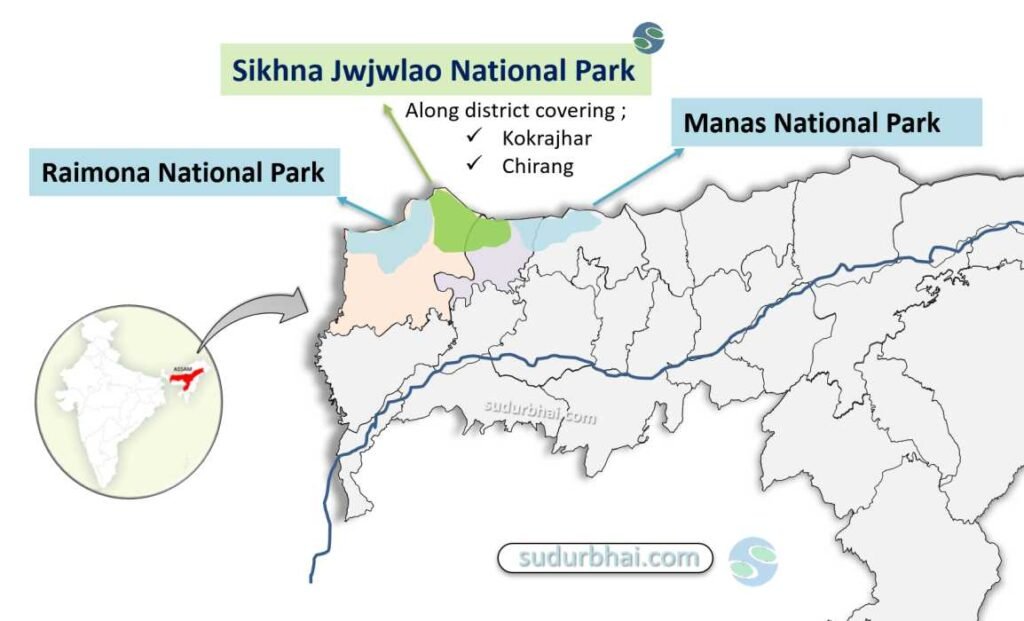Sikhna Jwjwlao National Park

1. Location and Area of Sikhna Jwjwlao National Park
- Geographical Location: Located in Bodoland Territorial Region (BTR), Assam.
- Districts Covered: Kokrajhar and Chirang.
- Bordering Protected Areas: Lies between Manas National Park (east) and Raimona National Park (west), forming a vital wildlife corridor.
- Total Area: 321.90 sq. km.
- Landscape Features:
- Dense tropical forests, riverine landscapes, and grasslands.
- Part of the Eastern Himalayan Biodiversity Hotspot.

2. Year of Establishment of Sikhna Jwjwlao National Park
Declared as Assam’s 8th National Park: February 16, 2025.
3. Biodiversity of Sikhna Jwjwlao National Park
A. Flora of Dehing Patkai National Park
Vegetation Types:
Tropical and Subtropical Moist Broadleaf Forests.
Grasslands and Riverine Ecosystems.
Dominant Plant Species:
Hollong, Sal, Teak, Bamboo, and a variety of medicinal plants.
Rich in orchids and epiphytes due to high humidity.
B. Fauna of Dehing Patkai National Park
Mammals
Asian Elephant (Uses the park as a migratory corridor).
Royal Bengal Tiger.
Golden Langur (Endangered species, also the mascot of BTR).
Leopard, Indian Gaur, Barking Deer, and Wild Boar.
Avifauna (Birdlife – Important Bird Area)
Great Indian Hornbill, Wreathed Hornbill, and Hill Myna.
Over 300 bird species, including migratory and resident birds.
Reptiles & Amphibians
King Cobra, Python, Monitor Lizards, and Tree Frogs.
Invertebrates
Home to 460+ species of butterflies.
4. Major Rivers and Terrain in Sikhna Jwjwlao National Park
A. Major Rivers
Saralbhanga River (locally called Swrmanga):
Forms a natural boundary with Raimona National Park.
B. Terrain & Climate
Landscape:
Hilly terrain with riverine forests, grasslands, and wetlands.
Climate:
Tropical monsoon climate.
Annual Rainfall: 2500-4000 mm.
Temperatures: Summers (20-35°C), Winters (8-18°C).
5. Conservation Challenges and Successes in Sikhna Jwjwlao National Park
A. Conservation Challenges
Deforestation and Illegal Logging.
Encroachment and Agricultural Expansion.
Poaching of Elephants and Golden Langurs.
Human-Wildlife Conflicts (Elephant raids on crops).
B. Conservation Successes
Declared a National Park to enhance legal protection.
Increased wildlife monitoring and anti-poaching measures.
Part of a transboundary conservation effort with Bhutan.
6. Eco-Tourism and Adventure Activities in Sikhna Jwjwlao National Park
Jungle Safaris and Nature Walks.
Birdwatching Expeditions.
Ethnic Tourism (Bodo culture, eco-lodges).
Trekking and River Activities along Saralbhanga River.
